“The Power to Surprise” is a tagline used by one Korean carmaker and sadly, that’s not SsangYong. See, with the sort of vehicles they’ve been coming up with—well-designed, capable, great value for money, SsangYong’s the carmaker that has every right to use that slogan. Case in point is the 2018 Tivoli XLV, pretty much one of the better small crossovers money can buy today.
This starts with the looks. It used to be that you can’t mention “SsangYong” without snickering by the time you reach “Yong”, but honestly, the Tivoli’s a great effort. This larger variant, dubbed the Tivoli XLV may not have the same attention-grabbing guy-in-tight-orange-pants type of vibe, but it’s clean and much more mature. The lines of the Tivoli work well in this elongated format and it’s all thumbs up until you get to the back where you’re confronted by the humongous, out-of-place “XLV” badge. This makes for a very strong case of a car looking better de-badged.
Inside, the Tivoli XLV exercises the same level of restraint and maturity as its exterior. Based off the Tivoli, the same angular look dashboard and steering wheel applies, but gone is the tacky two-tone scheme and in comes an all-black number instead. As with any value-oriented offering, hard plastics abound, but at least fit and finish seem to be a step up from the Tivoli’s. Switches, knobs, and stalks all seem well-wearing and look like they’ll easily withstand the abuse of time. It doesn’t look it in photos, but the seating position is typical crossover: high and commanding (even at its lowest setting). It’s not perfect, but it’s comfy enough even after long drives.
While the seating position is easy to get used to in the Tivoli XLV, there are three things that need improvement. First is the amount of unwanted reflections inside the cabin. Sometimes it gets so bad that the deeply recessed gauges are difficult to make out. Second, that Android-based infotainment system. It’s laggy, difficult to use, and washes out at the slightest hint of sunlight. Third, the buttons for the climate control system. Relegated to slivers of plastics (admittedly, they’re stylish), it’s hard to press when moving in traffic. Yes, there’s a big “Auto” mode in the central dial, but since the Tivoli automatically switches from recirculate to fresh, you’ll need to hit the “recirculate” button at least once. And each time, it’s like playing pin the tail on the donkey.
Being the more family-friendly Tivoli model, the Tivoli XLV’s stretched wheelbase equates to one of the best rear seat space in its class. The front seats are great, but even more surprising is that two or even three adults can fit in the back with more than enough knee and headroom to spare. Towards the back, the cargo hold is wider and deeper than most. Fitting 720 liters (almost 300 more than the standard Tivoli), the Tivoli XLV can fit a set of golf clubs or even a stack of folded balikbayan boxes sideways. Of course, all this space comes at the expense of the spare tire, of which the Tivoli XLV has none. Instead, there’s a tire inflation kit.
Having the sub-compact crossover segment’s only diesel engine, the Tivoli XLV gains a massive advantage when it comes to its on-road behavior. The 1.6-liter oil-burner does sound like a traditional diesel—like a blender crushing marbles, but at least it pulls well. There’s a slight delay before the power kicks in, but when it does, it makes easy work of any overtaking maneuver. Attached to it is a 6-speed automatic which is pleasant and responsive. Take note though that the gearbox has this tendency of downshifting off throttle. This keeps the revs between 2,000 to 3,000 rpm which, in turn, raises the noticeable vibration through the steering wheel and pedals. Stuck in a purely urban setting, the Tivoli XLV does 11.11 km/L (average speed 18 km/h), which isn’t bad.
The lengthened wheelbase does make for a better ride compared to the regular Tivoli. However, it still gets unsettled quickly going over road corrugations and sharp-edged bumps. However, once it gets onto better road surfaces, it exhibits a much better ride. Take a corner at speed, and it’ll tip slightly, but it does keep its body upright with little lean. That said, the three-mode adjustable steering system doesn’t cure the vague steering feel.
Some would-be buyers will be put off by the Tivoli XLV’s P 1,245,000 price tag. Although its well-kitted, it’s not exactly speced to win on-the-fence sales. With the exception of the diesel engine and all-wheel drive, the rest of the equipment simply puts it at par with the rest of the sub-compact crossover kingdom: dual SRS airbags, anti-lock brakes, cloth seats, etc. It’s got a 5-year bumper-to-bumper warranty and a 3-year all-inclusive PMS package but given the existence of the well-loaded Suzuki Vitara (P 1,098,000) or even Honda HR-V (P 1,260,000) makes the case for the Tivoli XLV 4WD hard. Thankfully, there’s a 4x2 variant and at least that one arrives at a much more reasonable P 1,095,000.
Price aside, the Tivoli XLV doesn’t just end up as a more practical version of SsangYong’s game-changing Tivoli, but it also starts to banner for this relatively unknown Korean carmaker changing people’s perception from also-ran to bankable leading man. By no means is the Tivoli XLV perfect, but it’s also hard to ignore the pleasant surprise it manages to pull off.
2018 SsangYong
Tivoli XLV ELX 4WD
|
|
| Ownership | 2018 SsangYong Tivoli XLV ELX 4WD |
| Year Introduced | 2016 |
| Vehicle Classification | Sub-compact Crossover |
| The Basics | |
| Body Type | 5-door SUV |
| Seating | 5 |
| Engine / Drive | F/AWD |
| Under the Hood | |
| Displacement (liters) | 1.6 |
| Aspiration | Turbocharged |
| Fuel Delivery | Common Rail |
| Layout / # of Cylinders | I4 |
| BHP @ rpm | 115 @ 4,000 |
| Nm @ rpm | 300 @ 2,500 |
| Fuel / Min. Octane | Diesel |
| Transmission | 6 AT |
| Cruise Control | No |
| Fuel Economy @ Ave. Speed | 11.11 km/L @ 18 km/h |
| Dimensions and Weights | |
| Length (mm) | 4,440 |
| Width (mm) | 1,798 |
| Height (mm) | 1,605 |
| Wheelbase (mm) | 2,600 |
| Curb Weight (kg) | 1,535 |
| Suspension and Tires | |
| Front Suspension | Independent, MacPherson Strut |
| Rear Suspension | Independent, Multi-Link |
| Front Brakes | Vented Disc |
| Rear Brakes | Disc |
| Tires | Hankook Kinergy GT 215/45 R 18 V (f & r) |
| Wheels | Alloy |
| Safety Features | |
| Airbags | 2 |
| Anti-Lock Brakes (ABS) | Yes, with EBD |
| Traction / Stability Control | No |
| Parking Sensors | Yes, Rear, with Camera |
| Other Safety Features | None |
| Exterior Features | |
| Headlights | HID |
| Fog Lamps | Yes, Front |
| Auto Lights | No |
| Rain-sensing Wipers | No |
| Interior Features | |
| Steering Wheel Adjust | Tilt |
| Steering Wheel Material | Leather |
| Seating Adjustment | Manual |
| Seating Surface | Fabric |
| Folding Rear Seat | Yes, 60/40 |
| On-Board Computer | Yes |
| Convenience Features | |
| Power Steering | Yes |
| Power Door Locks | Yes |
| Power Windows | Yes |
| Power Mirrors | Yes, with Fold |
| Climate Control | Dual Zone |
| Audio System | Stereo DVD MP3 Aux USB Bluetooth |
| # of Speakers | 6 |
| Steering Controls | Yes |

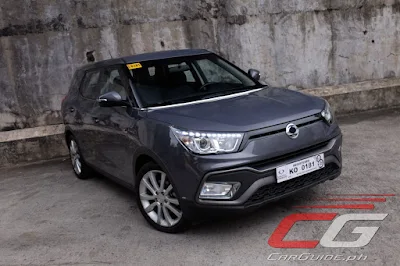


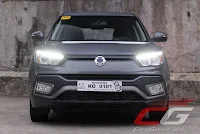













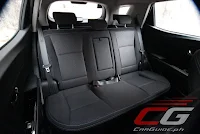
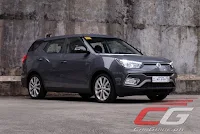





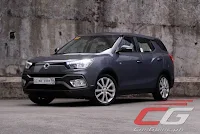
Specs are nice but the looks is really quite horrendous! It's like extending a Kia Soul at the back and putting a Campershell-like cover. Just remember a Japanese brand which really doesn't have a lot to be Dzired...
ReplyDeleteThis is defintely more premium than mazda.
ReplyDeleteWait till you touch the materials used in this car, lol. That interior looks like its from 2012 btw.
DeleteSsangYong reminds me of "fake" Benz back in the 90's. The mb100 van and Musso SUV. In addition, the ugly rexton and hearse rodius...Truly a synonymous brand when it comes to ugliness.
ReplyDeleteLooks bland but looks better than the juke. Also the 4x2 model seems competitively priced
ReplyDeleteBetter this than mazduh.
ReplyDeleteHow do you read out its name? "XLV"? (Like Subaru's XV?) Or are these Roman numerals for 45?
ReplyDeleteMay be the lifespan is this vehicle is only 45 months perhaps?....
Delete